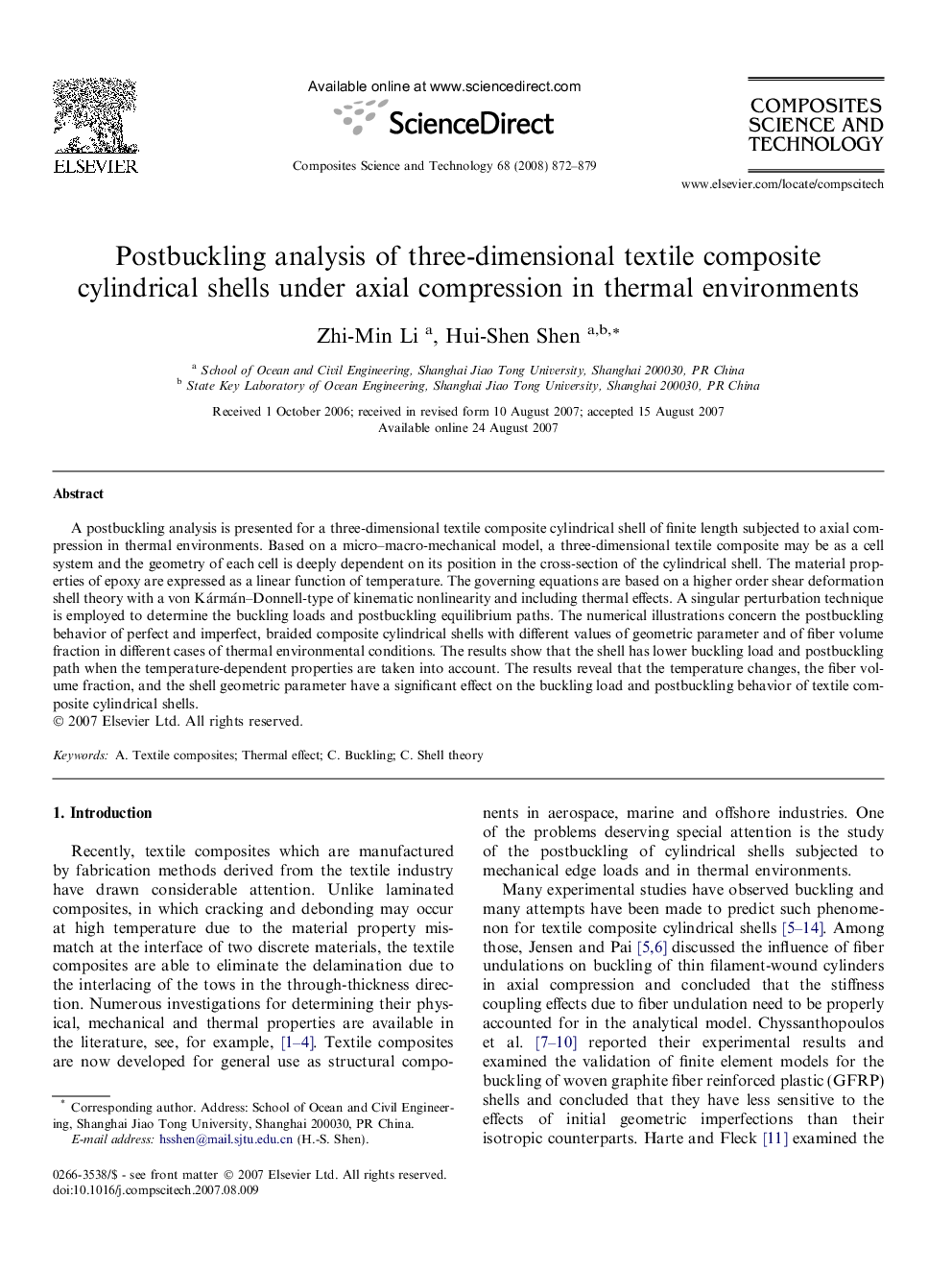| Article ID | Journal | Published Year | Pages | File Type |
|---|---|---|---|---|
| 822369 | Composites Science and Technology | 2008 | 8 Pages |
A postbuckling analysis is presented for a three-dimensional textile composite cylindrical shell of finite length subjected to axial compression in thermal environments. Based on a micro–macro-mechanical model, a three-dimensional textile composite may be as a cell system and the geometry of each cell is deeply dependent on its position in the cross-section of the cylindrical shell. The material properties of epoxy are expressed as a linear function of temperature. The governing equations are based on a higher order shear deformation shell theory with a von Kármán–Donnell-type of kinematic nonlinearity and including thermal effects. A singular perturbation technique is employed to determine the buckling loads and postbuckling equilibrium paths. The numerical illustrations concern the postbuckling behavior of perfect and imperfect, braided composite cylindrical shells with different values of geometric parameter and of fiber volume fraction in different cases of thermal environmental conditions. The results show that the shell has lower buckling load and postbuckling path when the temperature-dependent properties are taken into account. The results reveal that the temperature changes, the fiber volume fraction, and the shell geometric parameter have a significant effect on the buckling load and postbuckling behavior of textile composite cylindrical shells.
